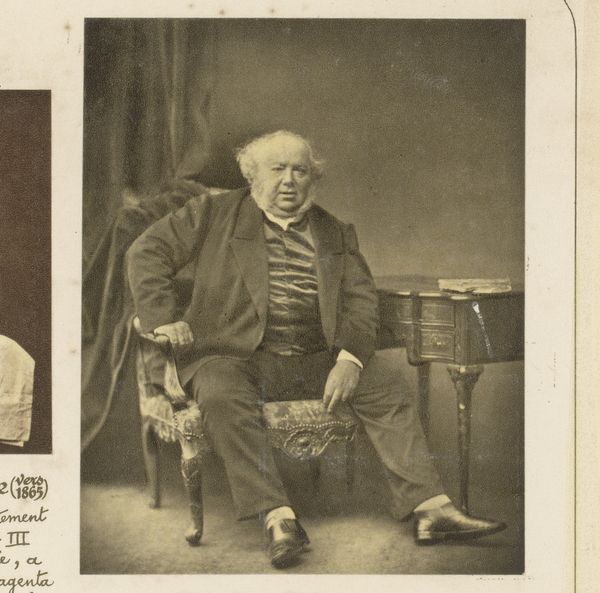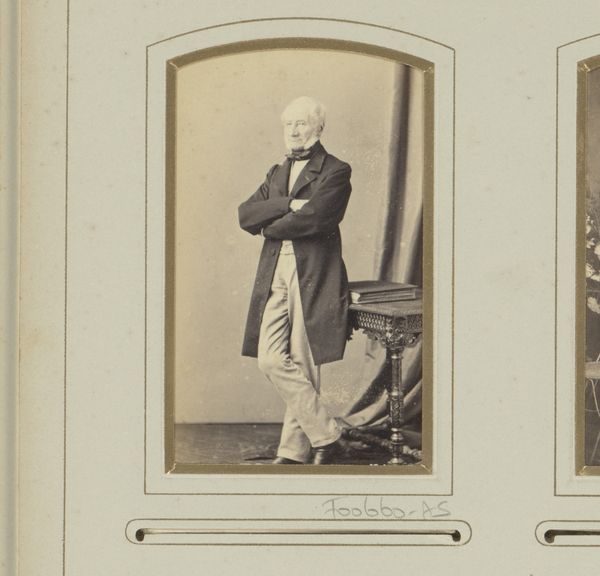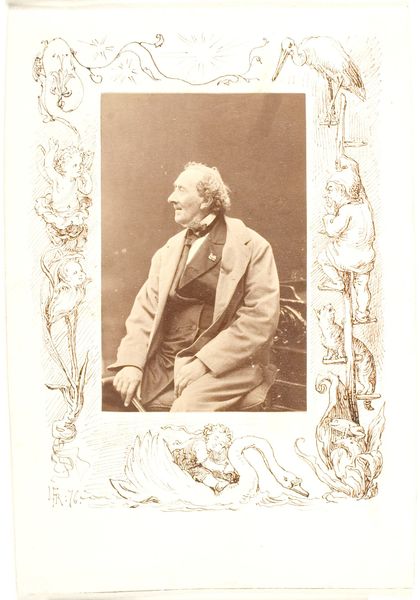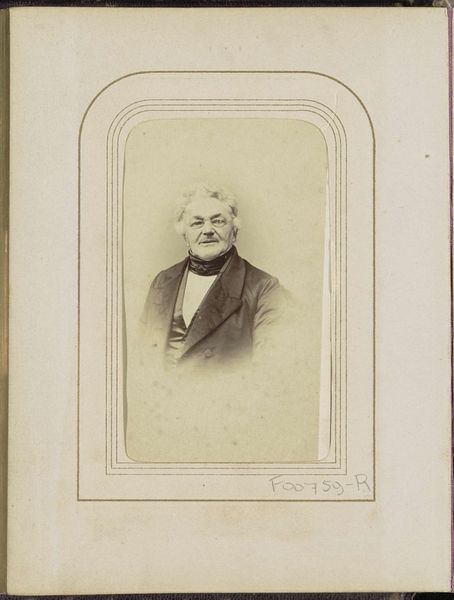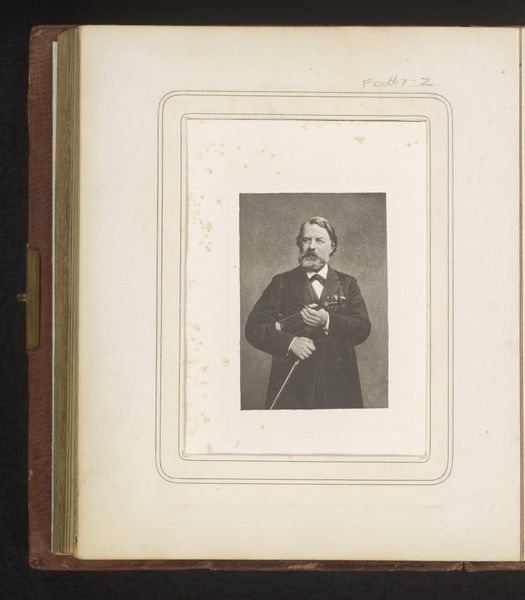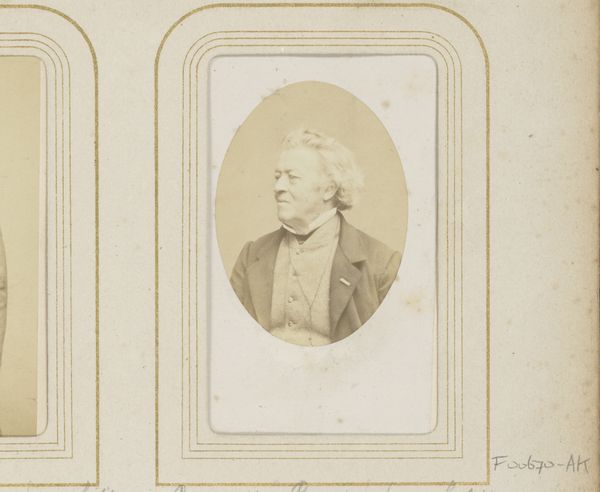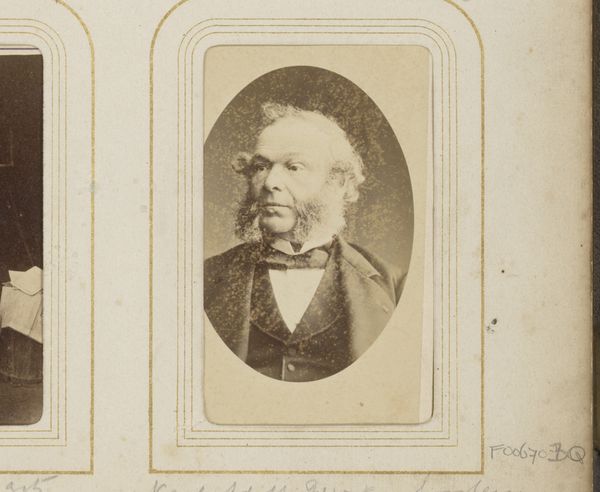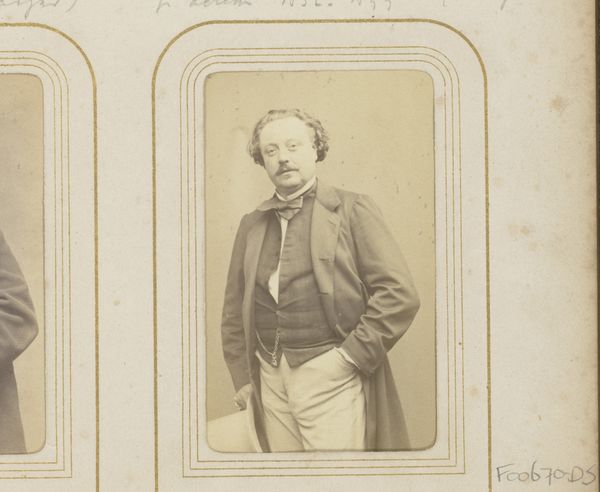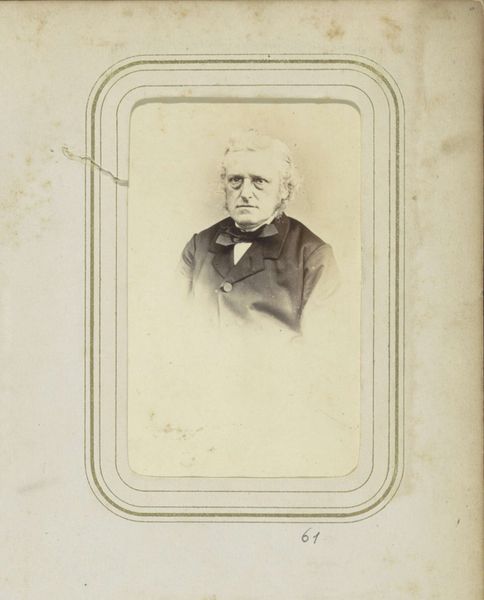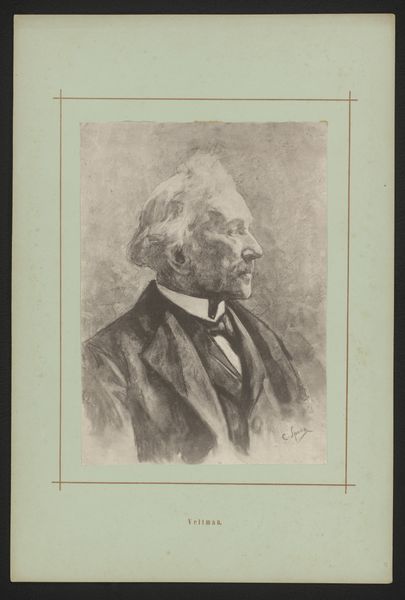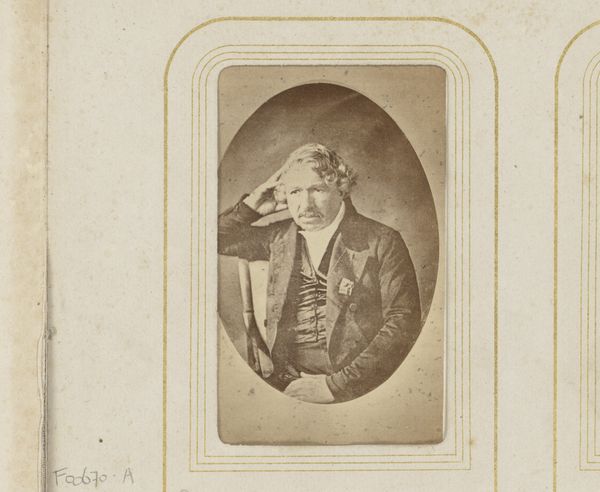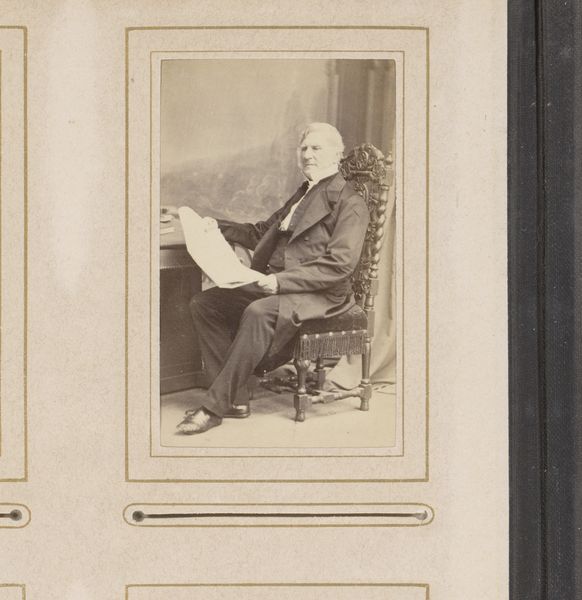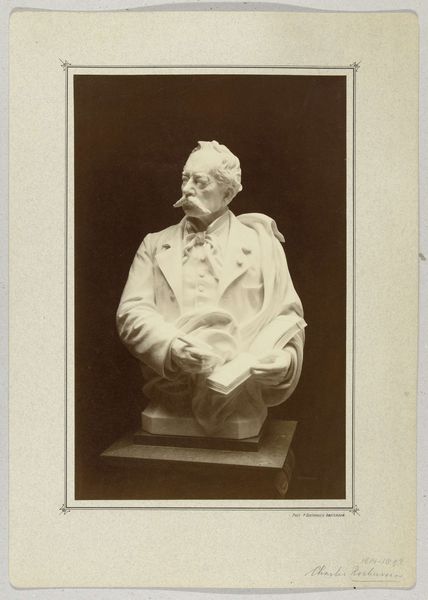
photography
#
portrait
#
impressionism
#
photography
#
historical photography
#
19th century
#
history-painting
#
academic-art
Dimensions: height 223 mm, width 394 mm, height 298 mm, width 401 mm
Copyright: Rijks Museum: Open Domain
Editor: Here we have "Fotoreproductie van een geschilderd portret van Baron Brisse," a photographic reproduction of a painted portrait by Michel Berthaud, created sometime between 1876 and 1900. The triptych format really struck me; it almost feels like a religious icon, but with this very bourgeois gentleman at the center. What do you make of that? Curator: Indeed. The triptych is fascinating. It’s an inherently symbolic form, laden with historical weight, particularly in religious art. The portrait in the center immediately commands attention. Flanking him are what seem to be paintings depicting still life elements of what is probably hunted game and cultivated fruits. Editor: Yes, that contrast is really striking! The opulence on either side of this serious man in the middle... it's a little unsettling. Curator: The juxtaposition sets up a symbolic tension, doesn't it? Are these surrounding elements meant to represent his domain, his wealth, perhaps even virtues like providence or husbandry? The careful arrangement is a statement about status and values. Consider also the choice of photography to reproduce the painted portrait. What meanings does this technological intervention carry? Editor: That’s a good question. Photography democratizes art, right? Makes it more accessible… Curator: Potentially, yes. But what if it’s being used to enshrine this particular image, to lend it a different kind of permanence through a new medium? Editor: I see your point. It’s less about accessibility and more about amplifying the Baron's image and solidifying his legacy, perhaps? Curator: Precisely! It makes one wonder what he hoped this symbol would project into the future, and how our interpretation shifts with time and cultural context. Editor: I’d never considered how the medium itself could be part of the symbolic language. Thanks; that's given me a lot to think about! Curator: Likewise. These juxtapositions and repurposings of symbolic form reveal much about cultural values and individual aspirations across generations.
Comments
No comments
Be the first to comment and join the conversation on the ultimate creative platform.
